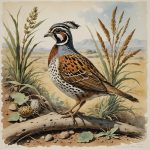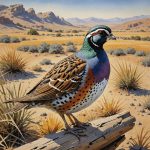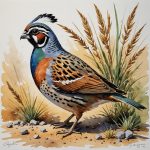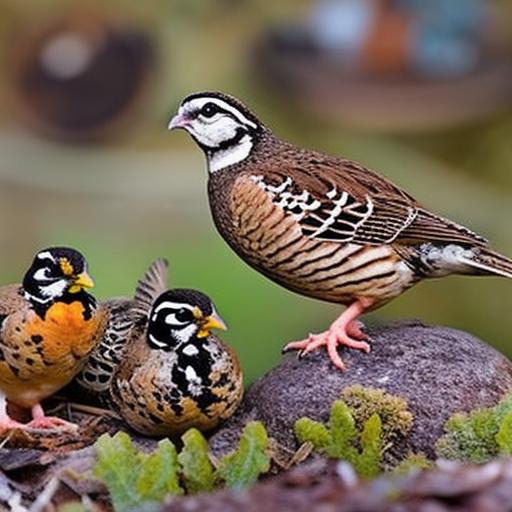Nestled amongst the tall grasses and wildflowers of the meadow,a bustling community of quail go about their daily routines. With their distinctive plumes and rapid, urgent movements, these charming birds add a touch of whimsy to the tranquil landscape. Join us as we delve into the fascinating world of this enchanting group of quail, where cooperation, interaction, and survival skills are key to their success in the wild.
Table of Contents
The Endearing Behavior of Quail in Groups
Quail are known for their endearing behavior when thay gather in groups.These small birds exhibit a sense of unity and camaraderie that is truly heartwarming to witness. one charming behavior of quail in groups is their tendency to stick together, moving as a cohesive unit as they go about their daily activities.
Another endearing trait of quail in groups is their vocal communication with each other. They use a variety of calls and sounds to stay in touch and alert each other to potential dangers. This constant chatter creates a lively and energetic atmosphere among the quail, showcasing their strong social bonds.
How Quail Communicate within Their Flock
Quail are fascinating birds that are known for their intricate communication within their flock. These small birds have developed various ways to communicate with each other, ensuring the safety and well-being of the group.
One way quail communicate is through their distinctive calls and sounds.Each call has a specific meaning, whether it be a warning of danger, a signal to gather for food, or a call to regroup. Additionally,quail use body language such as head bobs,tail flicks,and wing movements to convey messages to their flock members. By combining vocalizations and physical gestures, quail are able to maintain a strong sense of unity and coordination within their group, ultimately increasing their chances of survival in the wild.
Quail are social birds that thrive in group settings, benefitting from interactions with each other in various ways. One of the main advantages of socialization for quail is the sense of safety and security it provides. When quail are in a group,they can alert each other to potential dangers and increase their chances of survival.This communal behavior also helps quail to regulate their body temperature by huddling together during cold weather.
Socialization among quail also plays a crucial role in their reproductive success. Being in a group can increase the chances of finding a mate and successfully breeding.Additionally, social interactions within a group can help quail develop vital social skills and communication abilities, enhancing their overall well-being and quality of life. are numerous and essential for their physical and mental health.
Creating a Safe and Stimulating Environment for Quail Groups
is essential for their well-being and overall health. When designing a living space for quails, it’s important to consider their natural habitat and behaviors.To mimic their natural environment, provide plenty of space for them to roam and forage. Utilize materials such as sand, dirt, and grass for their bedding to encourage natural behaviors like dust bathing and scratching.
Along with space and appropriate bedding, consider adding enrichments to keep the quails mentally stimulated. This can include providing hiding spots, perches, and objects for them to peck at. By creating a dynamic environment, you can prevent boredom and reduce stress within the quail group. Remember to regularly clean and maintain their living space to ensure a healthy environment for these fascinating birds.
Q&A
Q: What is the unique behavior of a group of quail?
A: A group of quail, known as a covey, has a fascinating social structure where they work together to find food and keep each other safe.
Q: How do quail communicate within their group?
A: Quail use a variety of vocalizations, such as calls and trills, to communicate their location, warn of danger, and keep in contact with one another.
Q: What is the typical size of a quail covey?
A: Quail coveys can range in size from just a few birds to over 20 individuals, depending on the availability of food and the level of competition in their environment.
Q: how do quail defend themselves against predators?
A: Quail are known for their quick reflexes and ability to fly short distances at high speeds to escape predators. They also rely on their camouflage and group safety in numbers to deter threats.
Q: How do quail contribute to their ecosystem?
A: Quail play a vital role in controlling insect populations and spreading seeds through their foraging habits, making them an important part of their ecosystem’s balance.
Future Outlook
the quail might potentially be small and inconspicuous birds, but their unique behaviors and close-knit social structures make them truly fascinating creatures to observe. The next time you come across a group of quail, take a moment to appreciate the intricate dynamics at play within these seemingly unassuming flocks. Their loyalty to one another and their ability to work together for the greater good serve as a reminder of the beauty and complexity of the natural world around us. So next time you see a group of quail scurrying through the underbrush, remember to pause and marvel at the wonders of these remarkable birds.
Meet Walter, the feathered-friend fanatic of Florida! Nestled in the sunshine state, Walter struts through life with his feathered companions, clucking his way to happiness. With a coop that’s fancier than a five-star hotel, he’s the Don Juan of the chicken world. When he’s not teaching his hens to do the cha-cha, you’ll find him in a heated debate with his prized rooster, Sir Clucks-a-Lot. Walter’s poultry passion is no yolk; he’s the sunny-side-up guy you never knew you needed in your flock of friends!






